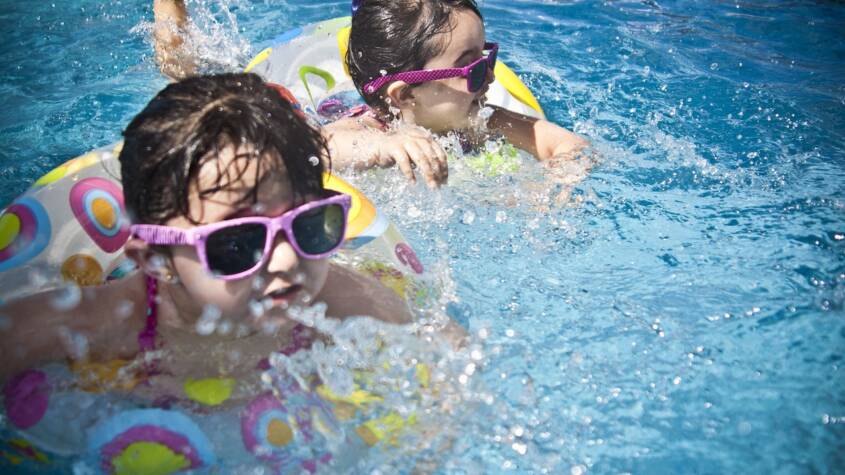
Swimming lessons for kids are essential for building confidence and ensuring safety in and around water. These lessons teach children vital swimming skills and water safety practices that can prevent accidents and save lives. Enrolling a child in swimming classes not only enhances their ability to swim but also promotes physical fitness and social interaction with peers.
Parents often look for ways to enrich their children’s lives, and swimming lessons provide an excellent opportunity for development. Not only do they improve coordination and strengthen muscles, but they also instill a sense of accomplishment as children master new skills. With qualified instructors and structured programs, kids can enjoy a fun, engaging environment while learning.
Choosing the right swimming program can be overwhelming, but understanding the different options available helps make the decision easier. From private lessons to group classes, parents can find a suitable fit for their child’s learning style and comfort level. Prioritizing swimming education plays a crucial role in cultivating a safe and enjoyable experience in the water.
Benefits of Swimming Lessons for Children
Swimming lessons provide various advantages that contribute to children’s safety, health, and development. Through structured lessons, children not only learn essential skills but also experience important social interactions and cognitive growth.
Improves Water Safety
Water safety is a critical skill that can save lives. Swimming lessons teach children how to navigate water environments safely. They learn essential techniques, such as floating, treading water, and how to recognize hazardous situations.
Understanding the importance of safety helps children respect water bodies, reducing the likelihood of accidents. Early education about swimming enables them to recognize their limits, swim with confidence, and understand the implications of risky behaviors around water.
Enhances Physical Health
Swimming is a low-impact exercise that promotes overall physical health. It strengthens muscles and improves cardiovascular endurance. Regular swimming builds flexibility and increases lung capacity, which is beneficial for children’s growth.
Children engaged in swimming lessons also tend to develop better coordination and balance. This not only aids their swimming ability but also enhances their performance in other sports and physical activities as they grow.
Promotes Social Skills
Group swimming lessons foster social interaction among children. They learn to cooperate with peers, follow instructions, and share feedback. This teamwork aspect is vital for developing communication skills and building friendships.
Social skills gained through swimming extend beyond the pool. They help children build confidence and navigate various social situations effectively. Learning to work together in a team setting can improve their relational skills.
Boosts Cognitive Development
Swimming lessons can positively affect cognitive development. The focus required during lessons enhances concentration and attention spans. As children learn new techniques, they develop problem-solving skills and the ability to follow complex instructions.
Moreover, swimming introduces children to concepts such as physics, buoyancy, and body movement, contributing to their understanding of the world. Engaging both mentally and physically during lessons strengthens neural connections, supporting learning in other areas.
Swimming Lesson Structure and Progression
A well-structured swimming lesson program guides children through a series of skill levels. It ensures they build a solid foundation before progressing to more advanced techniques and competitive swimming.
Assessment and Placement
Before joining a swimming class, children typically undergo an assessment. This assessment evaluates their current swimming abilities and comfort level in the water.
Factors considered during this evaluation include:
- Age: Younger children may require different instruction methods.
- Skill Level: Understanding how to float, kick, or swim various strokes.
- Water Comfort: Ensuring the child feels safe and confident in the water environment.
Based on these factors, instructors can place children in the appropriate class that matches their skills and comfort.
Learning Basic Skills
Basic skills form the core of swimming education. Children first learn essential techniques such as floating, kicking, and arm movements. These skills are taught progressively to build confidence.
- Floating: Mastering this skill is crucial for safety and comfort in water.
- Kicking: Focusing on proper leg movements helps establish a strong swimming foundation.
- Breathing Techniques: Introducing breath control enhances stamina and effectiveness.
Consistent practice in a supportive environment encourages children to progress confidently and safely.
Advancing to Higher Levels
Once foundational skills are established, children can move on to more complex strokes and techniques. This progression may include:
- Freestyle and Backstroke: Introduction to proper techniques for these strokes.
- Diving Techniques: Learning safe entries into the water.
- Endurance Training: Building strength and endurance through longer swimming sessions.
At this stage, instructors often introduce drills that focus on improving efficiency and speed in the water.
Competitive Swimming Preparation
For those interested in competitive swimming, preparation becomes essential. Training for competition includes refining techniques and enhancing physical conditioning.
Key components of competitive preparation involve:
- Stroke Technique Refinement: Focusing on starts, turns, and finishes.
- Speed Work: Implementing sprint sets to improve race times.
- Race Strategies: Teaching how to pace during a race and the importance of mental preparation.
This stage may include participation in swim meets to build experience and confidence in a competitive setting.
Sympathy Flowers: A Thoughtful Gesture for Consoling Loved Ones
Sympathy flowers serve as a heartfelt gesture during times of loss or grief. They express …




